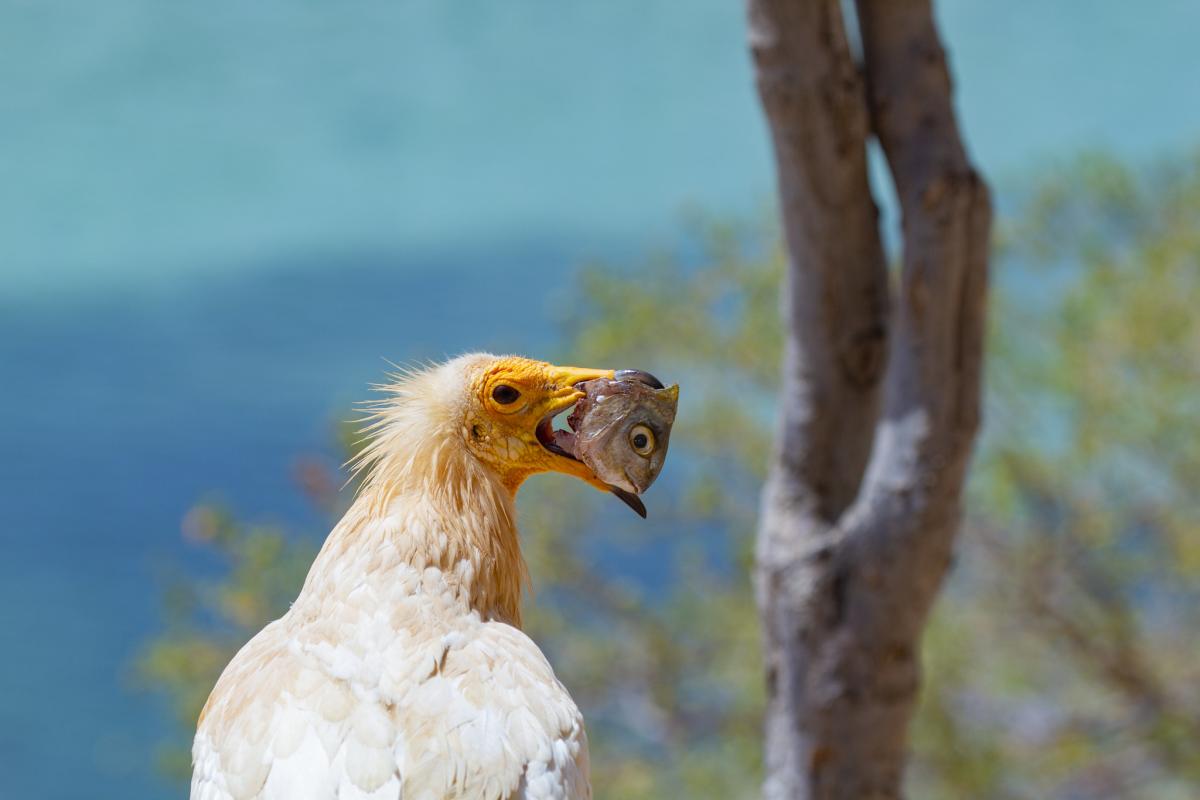Vladimir, OK2WX will be active as 7O2WX from Socotra Island, IOTA AF - 028, Yemen, 25 January - 12 February 2024.
He will operate on HF Bands with focus on 160, 80 and 40m, including activity in CQ WW 160m Contest.
Recent DX Spots 7O2WX
7O2WX Log search Working condx - ELECRAFT K4X ICOM 7300, PA Expert 1K3, Monoband Verticals 160, 80, 40, Spiderbeam 5 Band.
QSL via IZ8CCW.
Ads for direct QSL:
Antonio Cannataro, Via Don Minzoni 18, 87040, Marano Marchesato - CS, Italy.
7O2WX Socotra Island News 31 January 2024
Vlad is also currently moving radio and an amplifier from a tent in which is about 40 C, PA switches off at 45 ° C. There is a lower temperature in the stone shelter because it is open. Antennas are the same but we change coax cables when lenght not enough.
7O2WX Socotra Island News 27 January 2024
Vertical antenna on 160 m ready, beverage stretched. Unless something exceptional happens, I will be CW in the contest after 1500Z on 1815 Khz.
Vlad, 7O2WX.
7O2WX Socotra Island News 25 January 2024
Vlad, 7O2WX start his activity from Socotra Island.
7O2WX Socotra Island News 22 January 2024
On the way to Doha and Abu Dhabi, tomorrow flight to Socotra island / Yemen
The Lost World of Socotra Island
Socotra Island is one of the most beautiful and amazing places on Earth. Unique representatives of flora and fauna have survived in the harsh desert conditions. And due to the isolation of the island, many species of flora and fauna are not found anywhere else in the world.
The island of Socotra is part of the state of Yemen. It is located in the northwestern part of the Indian Ocean, 250 kilometers from the coast of Africa, and about 350 kilometers south of the Arabian Peninsula. It is part of the Socotra archipelago of the same name. The modest size of the island - 134 km long and 43 km wide - does not prevent it from being among the most important centers of biological diversity.
Translated from Sanskrit, "Sokotra" means the Island of Happiness. And it's easy to agree with this - the exuberance of botanical charm is juxtaposed with isolation, silence and vast white-sand beaches.
 Socotra Island, Yemen. Author - Kim's Little Bro.
Socotra Island, Yemen. Author - Kim's Little Bro.
For centuries, the island of Socotra was inaccessible to naturalists and early explorers. But in the late 1990s, it received a lot of attention, especially from those interested in its economic development and the preservation of its unique natural environment. Thanks to its nature, which has been preserved since prehistoric times, the island attracts not only specialists and scientists, but also ecotourism and relaxation enthusiasts. Socotra is one of the few places on the planet where progress has not spoiled the proper attitude of man to the nature around him and to himself.
The island is famous for its unusual landscape, which could be mistaken for the setting of a sci-fi movie about an unearthly civilization. The east and center of the island are dominated by mountain ranges with pointed peaks rising to a height of 1,570 meters into the sky.
 7O2WX. Socotra Island, Yemen Logo.
7O2WX. Socotra Island, Yemen Logo.
The mountain valleys are life-giving green oases. Steep slopes overhanging the flat coastline or directly over the raging waves, limestone plateaus located at the crossroads of all winds - all these are the amazing landscapes of Socotra.
The island of Socotra is a piece of the African continent with a mountainous topography. This part of the continental plate separated from Africa about 6 million years ago. Finding itself in isolation, without the influence of the outside world, the local nature developed in its own special way, acquiring unique features.
The location of the island has created excellent conditions for a large number of rare specimens of flora and fauna.
All land mollusks found here, 90% of reptiles and one third of plants are endemic, i.e. found only on this island. The population of endemic avifauna is the largest in the Middle East.
About 140 species of birds can be found on the island. Endemics include the Socotrian sparrow, Socotrian nectar, Socotrian sparrow and Socotrian lacewing.
In contrast to their terrestrial neighbors, the communities of deep-sea species are not rich in endemics. Their uniqueness lies in the fact that they represent a peculiar "cocktail" of diverse species, which emerged at the junction of three major areas: East Africa, Arabia and the Indo-Pacific region.
 Socotra Island, Yemen. Author - jandcbarnes.
Socotra Island, Yemen. Author - jandcbarnes.
There are about 800 species of plants on Socotra. Scientists say that the island's unique plants are fragments of ancient terrestrial flora that disappeared on the mainland millions of years ago. The most famous are Dragon Trees, Cucumber Tree, Dorstenia gigantea and Desert Rose (Adenium Socotranum), which resembles an elephant's leg decorated with delicate pink shoots.
Ancient legends say that Dragon Trees have dragon blood flowing in them, which has magical and healing properties. The resin of this tree has a blood-red color, it is actively used in cosmetics and medicine. The dragon tree is famous not only for the unusual color of the resin, but also for the original shape of the trunk and crown. The branches of the trees expand towards the sky, which gives them the appearance of huge mushrooms growing among the desert.
The cucumber tree can only be found on the island of Socotra. It is the only tree-like plant of the gourd family in the world. Its appearance resembles a baobab - a thick, fleshy trunk - up to a meter in diameter, small branches pulling up a sparse crown. In the past, this unique species was often found on the territory of the island, but due to active use for economic purposes, its number has significantly decreased. The cucumber tree got its name due to its fruits, which look like cucumbers but are studded with a large number of thorns.
The desert rose (Adenium Socotranum) is not at all like a rose, but it is still beautiful. This plant is considered one of the most beautiful desert flowers. The trunk of the tree is fleshy and thick, and may include several conjoined trunk sprouts. The height of the adenium reaches more than 3.5 meters, and the trunk diameter is 2.4 meters. Some representatives of the species can grow upwards, while others grow wide, becoming almost flat barrels. The short branches of the tree form a crown decorated with pink flowers. The desert rose is a slow growing and very rare tree. Dorstenia gigantea is a tree that does not require any soil - it can grow directly on bare rock.
Once, lying in the embrace of the Arabian Sea, Socotra was a legendary land at the edge of the known world. The raging sea off the island threatened mariners with blinds and shoals, and its inhabitants were believed to be able to control the winds by which they drove passing ships to shore and plundered them. But the most desperate treasure hunters took their chances - for the unseen riches of the mysterious island. Today, however, Socotra attracts explorers with a different kind of wealth.
The ancient Romans, Egyptians and Greeks alike have all used the treasures of Socotra's natural world, such as aromatic resins, frankincense, healing aloe extract and dragon's blood, the juice of the dragon tree. Numerous adventurers have come to this land for its rich booty, despite legends of the island's terrifying guardians - giant snakes living in local caves. Alexander the Great, the Queen of Sheba and Marco Polo dreamed of the riches of Socotra.
As for the inhabitants of the island of Socotra, they are very self-sufficient and cheerful people, despite the rather difficult living conditions. They speak the ancient Semitic pre-written language of Socotra, no less ancient and interesting for scholars than classical Arabic and Akkadian. With no concept of a safe and comfortable life, the inhabitants of the island developed a deep respect and understanding for the sea and the land, which was important for the survival of this people.
Socotra is globally significant for its biodiversity, evolutionary uniqueness and socio-cultural heritage. In recognition of the unique culture of the Socotra Archipelago, as well as the tremendous conservation efforts of the Government of Yemen, it was inscribed by UNESCO in 2003 on the World List of Biosphere Reserves under the Man and the Biosphere Programme.

